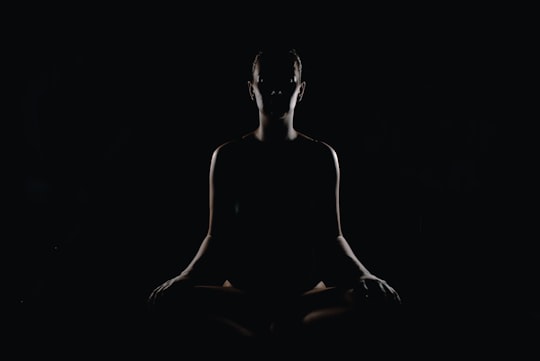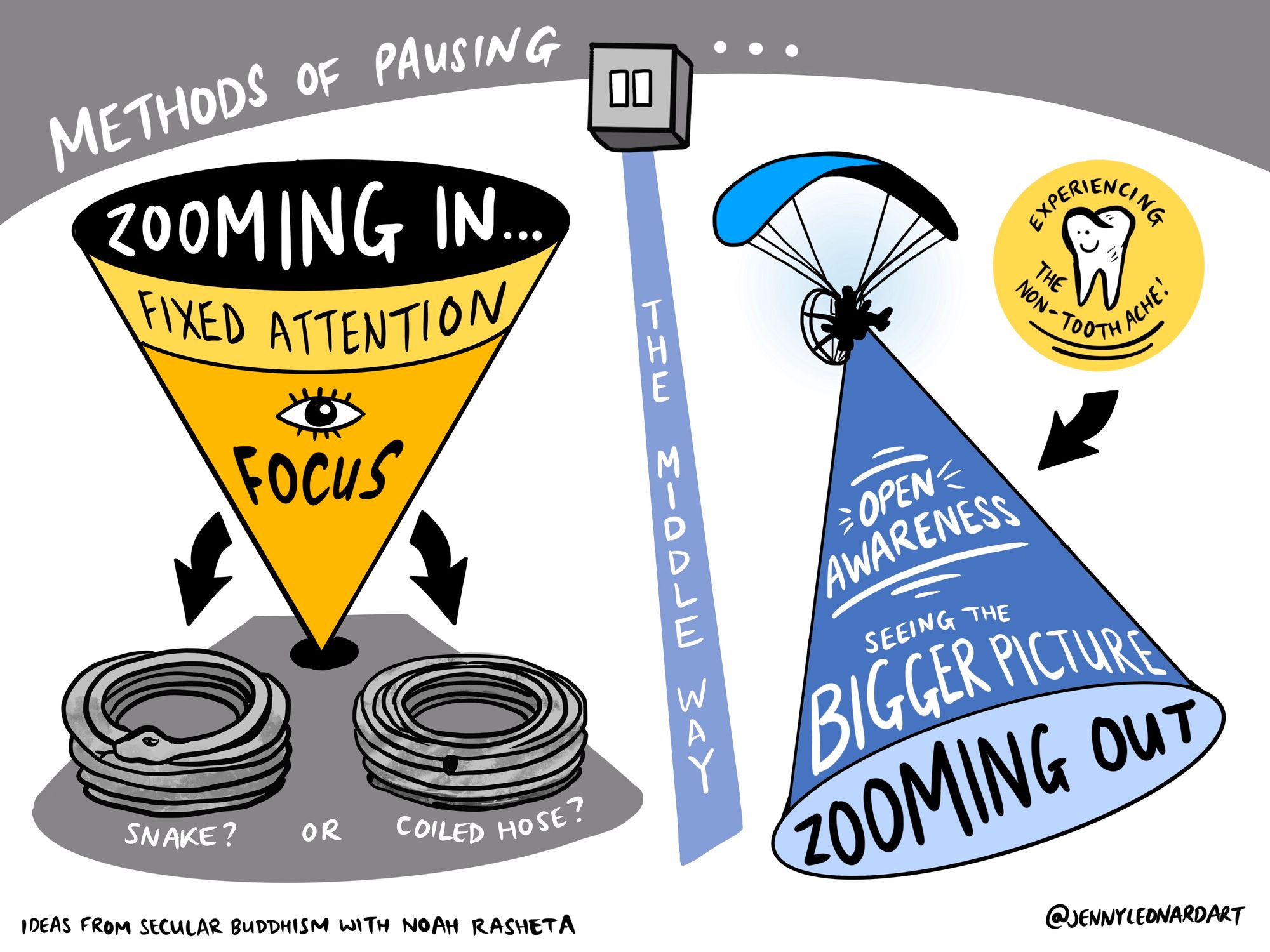
Meditation - The Pause Button
Meditation is akin to a spotlight, shedding light on the periphery of our awareness. Learn more about this valuable tool and how to use it.
Learning to pause is the first step in cultivating inner peace. Reactivity is not something we can fully stop, but it is something we can pause.
Taking a moment to pause can be a powerful way to observe and absorb the unfolding experience. We can even pause mid-thought and observe without judgment. We can look at the bigger picture, and ask ourselves: “Is this the path I want to be on?” “Is this the most skillful path for me at this time?” This same technique can be applied to our emotions and actions. By pausing, we create a space between stimulus and response, allowing us to respond or act more thoughtfully and skillfully.
Two types of meditation
There are two primary types of meditation. The first type aims to achieve focused attention, and the other aims to achieve open awareness.
Meditation as a Flashlight
Consider the two primary types of meditation, like a twistable flashlight that you use to navigate in the dark. Twisting the flashlight one way narrows the beam, making it more powerful and focused - this is akin to meditation that hones in on focused attention. Here, you're zooming in, shedding a concentrated beam of awareness on a singular point, whether it's your breath, a phrase, or a particular sensation.
Twist the flashlight in the opposite direction, and the beam widens, illuminating a larger space but with a softer glow. This mirrors the other type of meditation that emphasizes open awareness. Here, rather than focusing narrowly, you're zooming out, expanding your awareness to soak in the whole panorama of your experience, embracing whatever comes into the light of your attention.
Both the narrow, intense beam and the broad, gentle glow of the flashlight serve useful purposes, depending on what you're trying to explore or understand. In the same vein, both focused attention and open awareness meditation techniques have their unique benefits and can shed light on different aspects of your inner self. Practicing both can equip you with a versatile toolset to illuminate the various corners of your consciousness, promoting a more comprehensive understanding and fostering greater inner peace.
Focused Attention Meditation
Focused attention meditation, also known as concentration meditation, requires directing your attention to a single point, such as your breath, a sound, or a visualization. This type of meditation is designed to cultivate a keen focus on a single object, training your mind to resist the habitual temptation of distraction from the barrage of thoughts that constantly emerge in your mind. Imagine a flashlight with a narrow beam. As it moves around, the light only illuminates a small area at a time, the specific point where the flashlight is directed.
In a dark room filled with diverse objects, you can only discern the ones within the beam of light. By pointing the light at one object then swiftly shifting to another, you may miss intricate details because the light didn't linger long enough on the object. This metaphor illustrates how our attention operates. It shifts from one thing to another, from thought to thought, making it challenging to maintain focus on a single point long enough to truly comprehend what's unfolding.
Our attention doesn’t simply wander; it gets hijacked.
The metaphorical flashlight is continually yanked away from our intended focus, drawn by curiosity about what else is present in the room. Concentration entails directing attention to a single point. To master this requires practice. With consistent dedication, you can improve your ability to focus and diminish distractions or lapses in concentration. The more you refine this skill, the better you become, and the easier it will be to discern the finer details of your chosen focus.
Open Awareness Meditation
Open awareness meditation, sometimes known as mindfulness meditation, involves becoming perceptually open to all the sensory experiences that arise in your consciousness. Rather than centering your attention on a single point, as in focused attention meditation, this approach encourages you to broaden your awareness to take in the full spectrum of your present experience. Imagine your flashlight again, but this time with a wide beam. As you move it around, the light reveals a larger expanse of the room, making it possible to observe multiple objects simultaneously.
In a dark room filled with a multitude of objects, you can perceive the variety in your beam of light. Instead of limiting your attention to one object, you allow your light to cover more ground, illuminating many objects at once. You are not rushed to observe the details of one object and then another; rather, you are watching the interconnectedness of the objects within your view. This is how our awareness can be cultivated. It moves from a single point of focus to an expanded field of awareness, allowing for a more holistic understanding of our experiences.
Unlike the narrow beam of the flashlight in focused attention meditation, which is continually pulled towards a single point, in open awareness meditation, the metaphorical flashlight's beam widens to encompass a larger landscape. Embracing the fullness of your present experience requires patience and practice, as it can be an unfamiliar way of engaging with our thoughts and perceptions.
With consistent practice, you can enhance your ability to be aware and responsive to the ebb and flow of your thoughts, emotions, and sensations. The more you cultivate this skill, the better you become at discerning the subtle nuances of your experiences, leading to a deeper understanding of your inner and outer worlds. Open awareness meditation fosters a sense of being fully present and engaged in life, rather than being narrowly focused or preoccupied.
By practicing focused attention, your mind will be less distracted and have less mental chaos. This leads to greater inner peace. By practicing open awareness, your mind becomes more capable of observing the chaos and not resisting it. This also leads to greater inner peace. Both skills are very useful for everyday life.
Learn more

